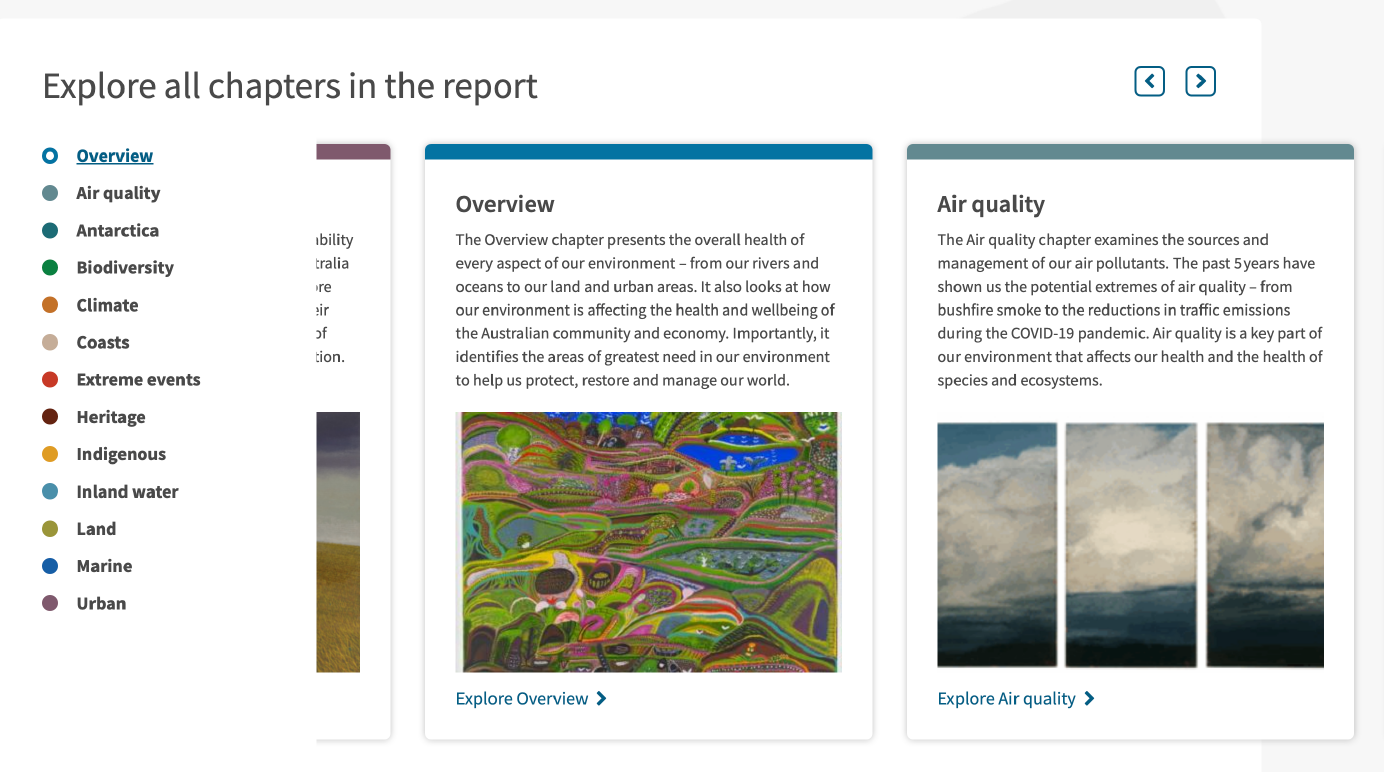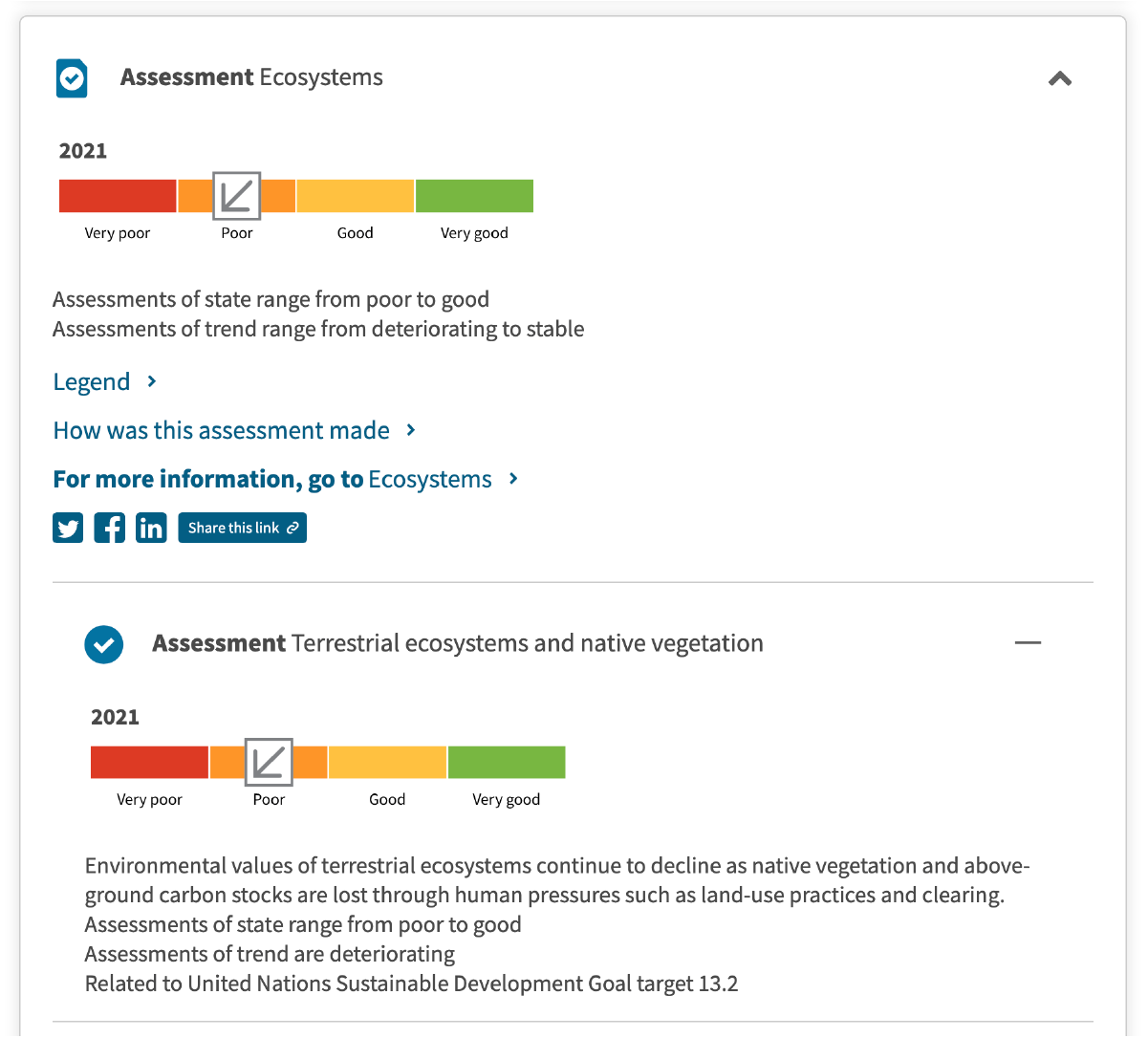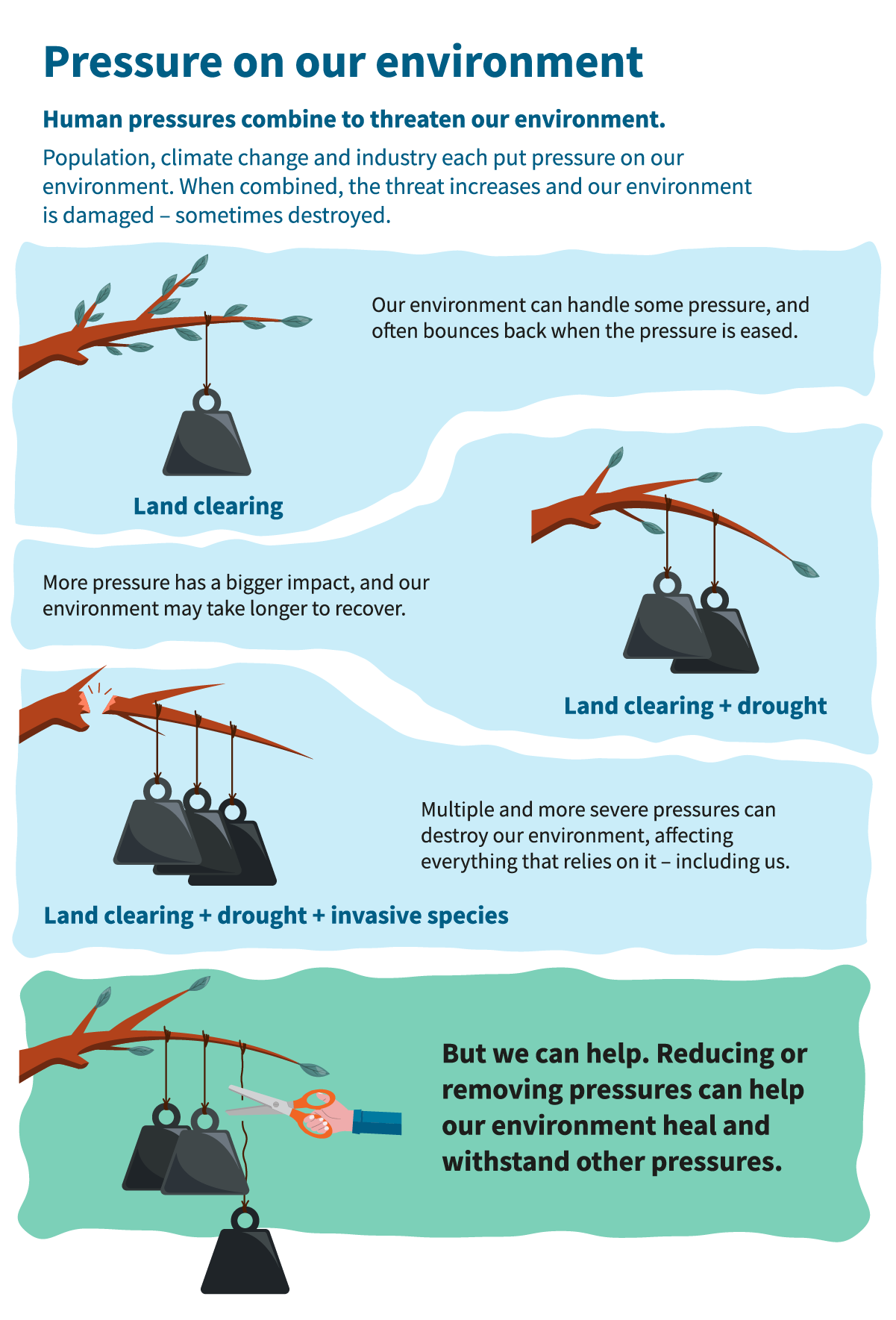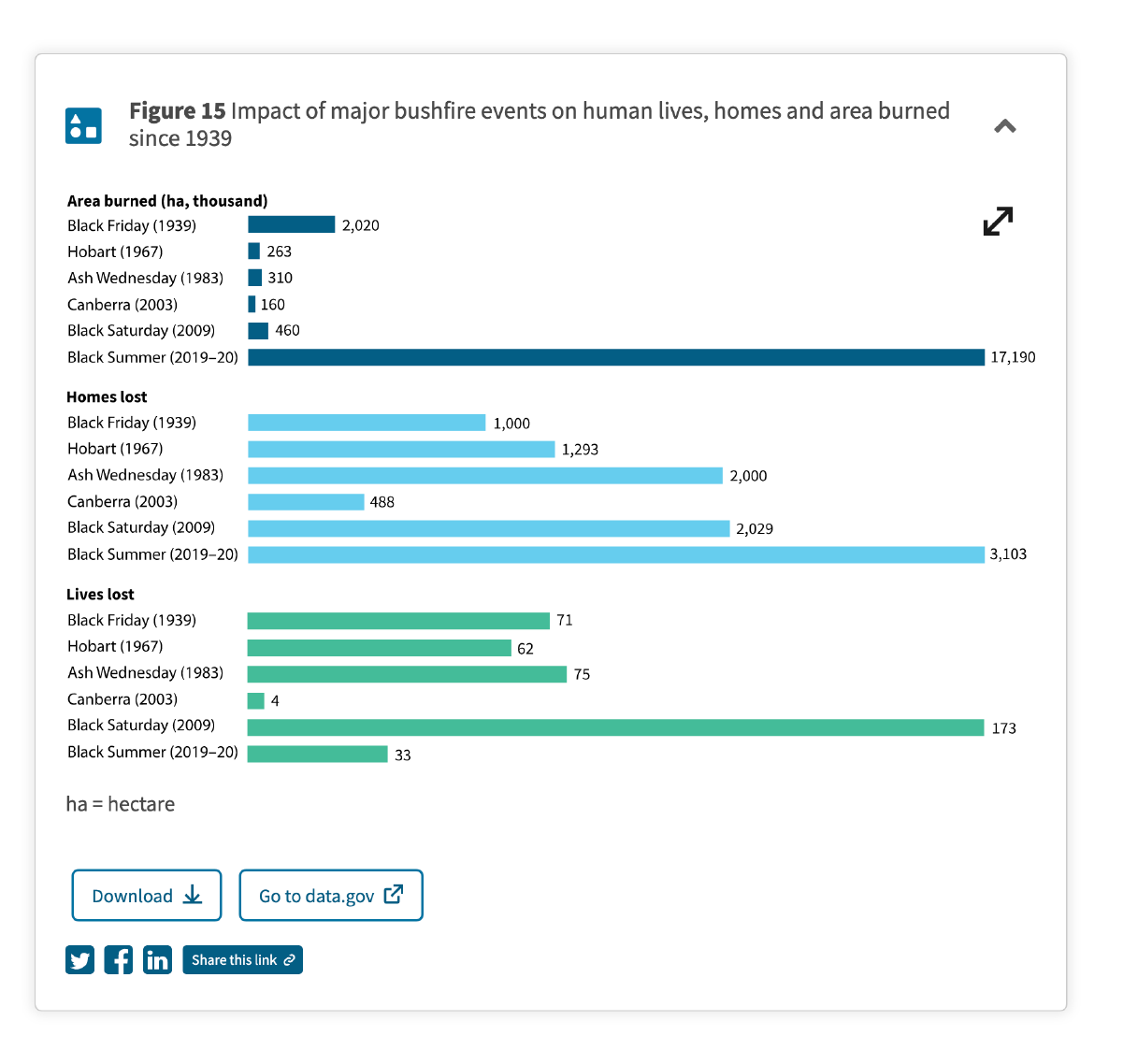State of the environment reporting is an internationally recognised approach to assessing changes in all aspects of our environment. Since 2010, Biotext has been a strategic partner throughout the intensive process of developing and producing this important national report.
Every 5 years, independent experts conduct a national assessment of the state of Australia’s environment, which reports on the current condition and trends of our environment and what this means for the future. It is a key publication of the Australian Government Department of Climate Change, Energy, the Environment and Water, forming a resource that informs decision makers and the public, to shape policy and action.
Working with the authors, department and web development teams, Biotext has worked to plan, shape, write, edit and design clear and engaging content for the 2021, 2016 and 2011 reports.
In recognition of the strength of the content, the 2021 Australia State of the Environment website won the Best in Show for Content at the 2023 Australian Web Awards.
The 2021 State of the Environment report website exemplifies the best-practice presentation of complex content, demonstrating how a website can present scientific content in an engaging way to meet the needs of several audiences.
It also demonstrates the success of a collaborative and agile approach between government, environmental, content and web experts. The team – with the department, authors, Biotext and EY Digital – developed clear content and effective information design to meet government, industry, research and community needs.
From the award nomination
Our role:
|
|
Strategy
We worked with the authors, department, user-testing and web teams to develop a content strategy and project plan to ensure that the report has the highest possible impact and to support efficient workflow. Informed by user research and surveys, along with stakeholder and author input, the strategy set out content aims, principles, structure, processes and quality control.
Content development
Each report aims to capture clear messaging as well as in-depth analysis across all aspects of the environment: the 2021 report has an overview, plus 12 chapters examining air quality, biodiversity, climate, coasts, extreme events, heritage, Indigenous, inland water, land, marine, urban and Antarctica. The chapters are developed by subject matter experts, working with Indigenous co-authors, and are peer reviewed and developed over many months to present the most accurate picture of our environment and its future.
We developed the structure and flow of each report through numerous author revisions and expert reviews, with the aim of presenting clear messages as well as technical detail. We worked closely with the subject-matter experts, and checked scientific accuracy, consistency and clarity of expression through many rounds of editing and proofreading. We edited references for accuracy and consistency, and worked with the web development team to ensure references were presented in an accessible way.
We developed layered content to ensure the information suits its many audiences – from government decision-makers to environmental managers, researchers, teachers, community groups, and the general public. Working from the technical report information, we developed communications materials including key point summaries and infographics.

First Nations
For the 2021 SoE report, First Nations inclusion was significantly increased in recognition of the role of First Nations peoples and their knowledge in the conservation and ecologically sustainable use of Australia’s environment and biodiversity. The report includes an Indigenous chapter and First Nations co-authors for nearly all chapters. Indigenous communities and leaders across the country were also engaged in the development of the report.
Biotext worked closely with the First Nations authors to ensure their views and messaging were respected and accurately represented in the report. We also worked with the authors and Indigenous designers to develop engaging infographics on key messaging.
Information design
We worked with department, UX and web development teams to develop information architecture and design concepts to aid navigation and engagement.
Our editors and designers worked closely with authors to identify key messages and concepts, and develop engaging infographics to highlight and explain the messages. In 2021, we drew 900 graphs, maps and diagrams, working from raw data or existing diagrams. We worked to ensure that graphs and other figures are accurate and easy to understand, and that data are accessible.



Jurisdictional reporting
We have also been involved in jurisdictional state of the environment reporting, including State of the environment South Australia 2013 and ACT state of the environment report 2015.